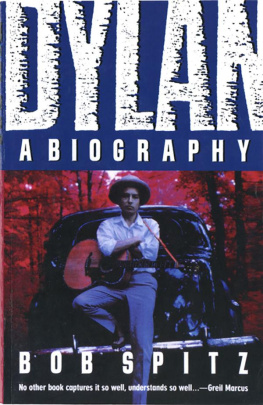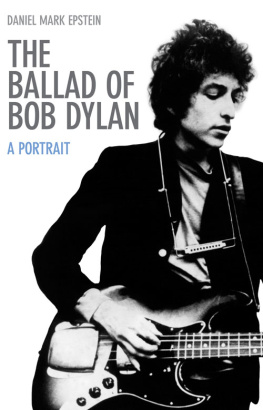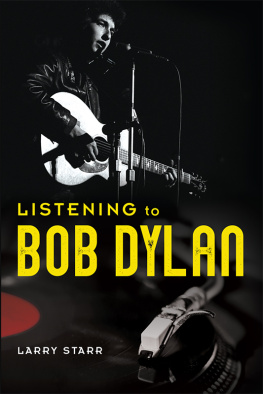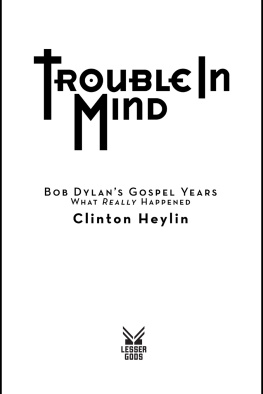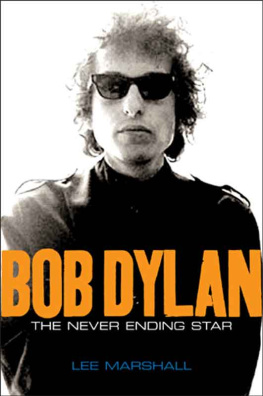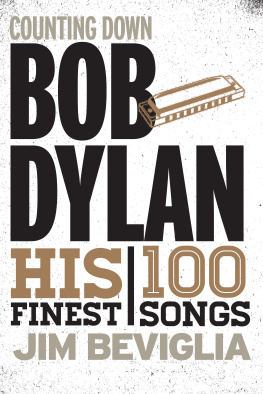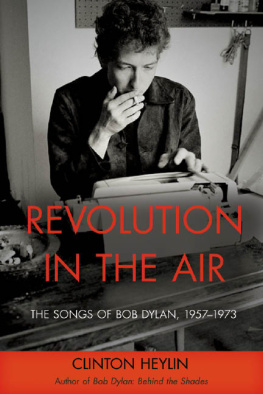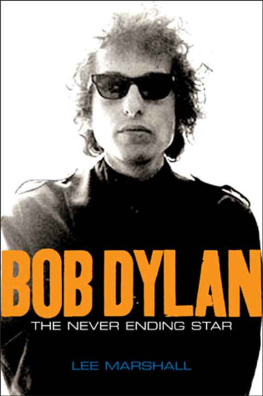Every great man nowadays has his disciples, and it is usually Judas who writes the biography.
Oscar Wilde, 1887
i
In the beginning was Scaduto. It was 1971. For five long years Bob Dylan had maintained a public profile that Howard Hughes would have been proud of. Anthony Scadutos was the first serious biography of the man, at a time when there was little information about his roots, his early life and his dreams of fame. It dutifully recorded his small-town youth in Hibbing, his year in Minneapolis and his early days in New York. By 1965 Dylan had outgrown the former friends Scaduto had talked to, and in the final section of his book Scadutos previously racy style, bereft of any major sources except Dylans own rewriting of his history in cagey interviews with the author, dissipated into song analysis and speculation.
It was another fifteen years before the publication of the second serious Dylan biography. In that time Dylan had reached the peak of his commercial success, released perhaps his most perfect album, converted to born-again Christianity and embarked on a series of tours all exceeding in scope his mid-sixties touring activities. On September 29, 1986the twenty-fifth anniversary of his famous original endorsement of Dylan in the New York TimesRobert Shelton published his own, long-awaited biography of his old friend.
Sheltons plans for a book had been first mentioned in the summer of 1966. The volume had been two decades in the making. Perhaps not surprisingly, given the level of expectation, it proved a profound disappointment . He barely advanced the story beyond Dylans fabled 1966 motorcycle accident, and much of the chunky tome was filled with pat song analysis and cuttings-file outtakes. Though he filled important gaps in Scadutos narrative of the early years, Shelton did Dylan a great disservice by interring him in the period he had already spent twenty years trying to live down.
Sheltons book also generated another pretender to the title of serious Dylan biographer. In the fall of 1988 Bob Spitz, author of a previous book on the 1969 Woodstock Festival, published a biography as expansive as Sheltons and as racy as Scadutos. Yet, despite conducting many original interviews, Spitz did not advance Dylans story either. His interviewees were mostly the familiar names used by Scaduto and Shelton, and his Goldmanesque approach, excruciating prose style, dubious sense of Dylans history andyet againvirtual exclusion of Dylans post-accident career resulted in what one reviewer described appositely as a thick, petrified, one-pound hunk of wood-fibre.
My own first attempt to correct this chronological imbalance and to focus on the mans creative output, the original Behind the Shades, written very much as a riposte to Spitz, appeared on Dylans fiftieth birthday in 1991, and was then heavily revised for his sixtieth in 2001; appearing shortly before another graduate of the Spitz School of Gossipography produced the latest Dylan-inspired doorstopper. Howard Souness surprisingly well-received Down the Highway managed to out-Spitz Spitz in his wholesale appropriation of gossip disguised as insight, written in a similarly excruciating journalese.
Now Bob Dylan is seventy. It is forty-five years since he fell off his motorcycle in Woodstock. Yet the history of those forty-five years continues to remain in the shadow cast by those pre-accident years. Three-quarters of this book is devoted to Dylans post-accident career. It is my intent to show the full sweep of his life to date, and his post-accident years actually represent four-fifths of his entire recording output.
Of course, Dylans rise to fame is an important part of his story and the first section of Behind the Shades deals fully with the well-documented pre-accident years. Though Scaduto and Shelton have given good coverage to this period, I have tried to explore a particular thread that I find weaving in and out of Scaduto and Shelton, but rarely overtly: what made Dylan so different from his contemporaries in Hibbing, in Minneapolis, in Greenwich Village and among the pop music icons of the mid-sixties? Why did he continue to grow when others, similarly regarded, stagnated?
The ability constantly to reinvent who Bob Dylan was, and is, remains the primary characteristic of his art. It is the way he unleashes new works. The process may be subtler now, but it endures. In the early and mid-sixties it actually seemed as if Dylan had no control over his chameleon changes, they proceeded at such a frantic pace. It is likely that Dylan never really knew in those days how close he was to the precipice.
How Dylan has coped with the legacy of those amphetamine years is an equally remarkable story. Like another would-be genius, Orson Welles, he is generally thought to have created his masterpiece, the Blonde on Blonde double album, before he was even twenty-five, and then spent the next forty-five years twisting in the wind, determined to assert himself as an abidingly creative artist. But, unlike Welles, he did manage to convince critics that he had surpassed that youthful masterpiece with the remarkable Blood on the Tracks, and he continued to come close to replicating said trick even after his so-named religious period. Which is a story in and of itself.
If the motorcycle accident represents an obvious demarcation point in Dylans career, his religious conversion has been the other major break with his past. His post-conversion career has been detailed in a total of thirty pages by both Spitz and Shelton, while Sounes covers the second half of a forty-year career in barely a hundred of his 400-plus pages. All three do a grave injustice to this major part of Dylans ever-changing career. Though much of this period reads as a catalog of missed chances and poor judgment, the last decade has seen a very personal battle to construct a worldview that retains his faith in both God and humanitya struggle which has still led to its fair share of great Dylan songs (and, lest we forget, three consecutive number one albums). Yet if the story in part two of Behind the Shades in no way parallels Orson Welless post-Kane career, the narrative in parts three and four is rather similar with its repeated hints of revival, the promise of masterpieces often unfulfilled, or rendered minor by lack of discipline or the neophobic impulses of others.
Dylans perennial reinventions of himself led me to structure this book around each new guise that he has taken on. In most cases, a chapter revolves around a major work or tour introducing a new Dylan (e.g. Another Side, Blood on the Tracks, Renaldo and Clara, the Rolling Thunder tours, Chronicles). It is a convenient format to use but it is only a convenience; perhaps the dominant colour in my patchwork, but there shall (or should) be more besides.
His career could as easily be divided by his geography. Certain chapters fit neatly into the geographic notion, coinciding with artistic periods as well. Thus his 1960 apprenticeship in Minneapolis marks an obvious divide. His fleeing New York for Durango, and finally settling in Malibu, again marked an important change; while his retreat (19669) is often referred to as his Woodstock Period (a slight misnomer, given that he had been spending most of his free time there since 1964). Entire albums have been the product of Dylans geography. Almost all of Another Side was written in Greece in May 1964; The Basement Tapes was written and recorded in Woodstock;


